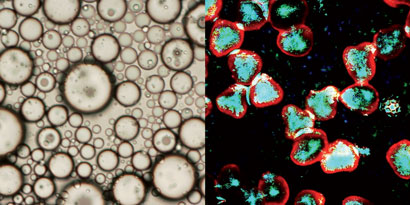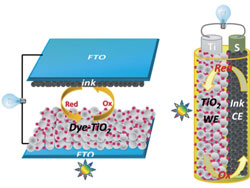This month sees the following Journal of Materials Chemistry articles that are in the top ten most accessed for May:
Strategies for chemical modification of graphene and applications of chemically modified graphene
Jingquan Liu, Jianguo Tang and J. Justin Gooding
J. Mater. Chem., 2012, 22, 12435-12452
DOI: 10.1039/C2JM31218B
Facile and effective synthesis of reduced graphene oxide encapsulated sulfur via oil/water system for high performance lithium sulfur cells
Fei-fei Zhang, Xin-bo Zhang, Yun-hui Dong and Li-min Wang
J. Mater. Chem., 2012, 22, 11452-11454
DOI: 10.1039/C2JM16543K
The chemistry of graphene
Kian Ping Loh, Qiaoliang Bao, Priscilla Kailian Ang and Jiaxiang Yang
J. Mater. Chem., 2010, 20, 2277-2289
DOI: 10.1039/B920539J
Porphyrin-containing D–π–A conjugated polymer with absorption over the entire spectrum of visible light and its applications in solar cells
Shaowei Shi, Xiaochen Wang, Yeping Sun, Song Chen, Xiaoyu Li, Yongfang Li and Haiqiao Wang
J. Mater. Chem., 2012, 22, 11006-11008
DOI: 10.1039/C2JM31649H
Optimized evolution of a secondary structure of LiFePO4: balancing between shape and impurities
Myeong-Hee Lee, Tae-Hee Kim, Young Soo Kim, Jeong-Seok Park and Hyun-Kon Song
J. Mater. Chem., 2012, 22, 8228-8234
DOI: 10.1039/C2JM30403A
High surface area mesoporous Co3O4 from a direct soft template route
Naween Dahal, Ilich A. Ibarra and Simon M. Humphrey
J. Mater. Chem., 2012, 22, 12675-12681
DOI: 10.1039/C2JM30460K
A review of advanced and practical lithium battery materials
Rotem Marom, S. Francis Amalraj, Nicole Leifer, David Jacob and Doron Aurbach
J. Mater. Chem., 2011, 21, 9938-9954
DOI: 10.1039/C0JM04225K
Enhanced performance of a MnO2–graphene sheet cathode for lithium ion batteries using sodium alginate as a binder
Jiaxin Li, Yi Zhao, Ning Wang, Yunhai Ding and Lunhui Guan
J. Mater. Chem., 2012, 22, 13002-13004
DOI: 10.1039/C2JM31583A
Thermal responsive fluorescent block copolymer for intracellular temperature sensing
Juan Qiao, Li Qi, Ying Shen, Lingzhi Zhao, Cui Qi, Dihua Shangguan, Lanqun Mao and Yi Chen
J. Mater. Chem., 2012, 22, 11543-11549
DOI: 10.1039/C2JM31093G
Hollow core–shell structured porous Si–C nanocomposites for Li-ion battery anodes
Xiaolin Li, Praveen Meduri, Xilin Chen, Wen Qi, Mark H. Engelhard, Wu Xu, Fei Ding, Jie Xiao, Wei Wang, Chongmin Wang, Ji-Guang Zhang and Jun Liu
J. Mater. Chem., 2012, 22, 11014-11017
DOI: 10.1039/C2JM31286G
Why not take a look at the articles today and blog your thoughts and comments below.
Fancy submitting an article to Journal of Materials Chemistry? Then why not submit to us today!












